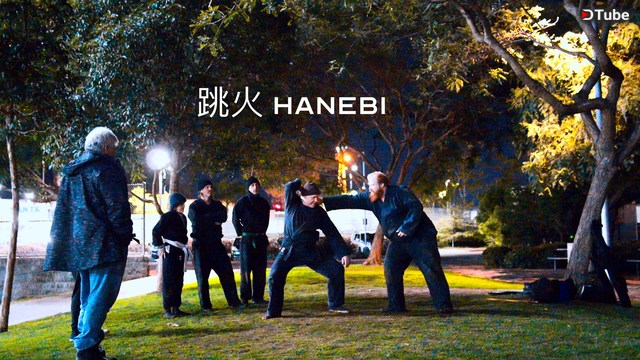
From https://www.rojodojo.com A preview of my Bujinkan video exploring the Bujinkan kata 跳火 Hanebi. We warmed up with a review of kihon happo. We put extra emphasis on Ganseki Nage.
I began class by describing a day when Hatsumi Sensei asked me to teach at the Bujinkan Honbu Dojo. He did this right after he painted isshin denshin on a scroll for me. But the kanji he used was a form of 会 to read 会心伝神 (knowing the teachings of kami). I decided to demo Hanebi, so I got to learn about this straight from Soke.
The attacker grabs from behind and you turn to get? What? That’s the problem, in real life, you don’t know.
He could be stabbing, shooting, kicking, punching, shaking hands, or just handing you something you dropped while walking. If you don’t know what it is, you better find out… and from a safe distance! So the initial turn in this kata should increase the distance instead of turning into the attack.
Instead of blocking the kick, you might lift and spread it out. Then the attacker has every limb going in a different direction. Not only does this make a tough fall, it leaves him vunerable to many attacks. This is where the sparks of hanebi start to fly.
I also used the opponent’s kick as 要 kaname. His attack divides the center. If you understand how to control the center, you can pivot and drop him on either side of it. One student wanted to test this against a Muay Thai style knee, so I obliged him.
The initial grab and response can be explored from the frame of 過去現在未来之術 Kako Genzai Mirai no Jutsu. This is past, present, and future. The normal kata is often done in the past, responding to the grab. Next I showed the present. Hatsumi Sensei used the shoulders in a movement to control. The lifting of the shoulders pulls and changes his balance.
For the 未来 mirai, or henka of the future, I used a variety of weapons to create space. You respond as in the Godan test, before the opponent catches ahold. Then in the pivot he is trapped by your weapon.
Of Note: German breeze
▶️ DTube
▶️ IPFS